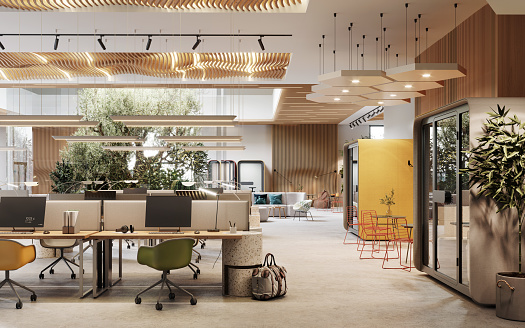Five easy ways for SMEs to join the circular economy

An alternative way to transform your office and business by embracing sustainability
The idea of a circular economy, which aims to eliminate waste and encourage the reuse of resources, may sound complex but it’s easy for offices to adopt and can even save your business money – and the good news is that it isn’t only big business which can take part.
What is the circular economy?
This phrase describes an alternative model to a linear business world in which goods are made, used and then disposed of. In a circular economy, the focus is on a more resource-efficient way of doing things, one in which waste is eliminated, resources are kept in use for as long as possible, and natural systems are regenerated.
Many organisations, large and small, are committing to implementing better business practices, applying circular economy principles. The office is a perfect place to start because that’s where so many resources are consumed – from the carpet we walk on, chairs we sit on, the desks we work at and all the IT, paper and stationery that goes with it – which has led to the term ‘circular office’.

It may sound like a complicated ethos but it really isn’t. Many of the principles can easily be grasped and put into action by SMEs who can not only benefit environmentally but also financially. Business in the Community has estimated that office waste costs UK businesses £15bn per year and that reducing waste can save organisations between £400 and £1,000 each year for every employee – a cost saving that no business whatever its size can afford to ignore.
Here are five quick ways that SMEs can start to embrace the circular economy and move towards a circular office:
-
Start by asking questions about everything in your office
Every office is different but if you start by asking three simple questions about the resources in your office, you can start to identify opportunities:
Answering these questions will reframe the way you think about everyday items and help you identify ‘quick wins’, top priorities and longer-term aspirations to reduce consumption, use resources for longer and eliminate waste.
“Do we really need it?”
If, for example, the office carpet is worn in areas of heavy footfall, do you really need a whole new office carpet or can you just re-patch those carpet tiles that are in worn areas and use the old carpet tiles in areas that are hidden by storage?
“What is this made of?“
Is this carpet made from a sustainable source or from recycled content?
“What happens to it when we’re done with it?”
Does your carpet supplier have a take-back scheme? Can the carpet be sold or donated or, failing that, recycled? -
Buy better quality whether it’s new or used
If you are able to buy high quality products from well-known and reputable brands – whether its furniture, IT and AV equipment or lighting systems – these will have a lot longer lifecycle than cheaper, more disposable products and will cost less in the long term.
Before you protest that you can’t afford to – have you thought about buying used? High quality used office furniture, for example, is available from top brands at a fraction of the cost of buying new. By buying used, you are helping to keep existing resources in use for longer and preventing them from being disposed of. You are also preventing the waste, energy and water consumption associated with the manufacturing process of most new products.
-
Pass on redundant assets to extend their lifecycle
If you buy high quality products – whether new or used – you may be able to sell these on when you no longer want them, creating revenue in the process. Even if there is no resale value, you may be able to give away redundant items such as IT and communications equipment on online platforms such as Freegle or donate them to a charity – prolonging their life whilst eliminating any disposal costs.
-
Repair and remanufacture rather than throwing away
Our throw-away society is changing for the better. Repair and remanufacture are being much more the norm, going back to how previous generations used to live and work. Providing you buy good quality products in the first place, there is often the opportunity to repair, for example, broken chairs or remanufacture, for example desks, to meet new specifications.
-
If your office needs a refresh, it may not need to be entirely replaced
If your office needs a refresh, there’s no need to throw the baby out with the bathwater and start again from scratch. Repairing or cleaning ceiling tiles would work better in a circular economy than fitting an entirely new ceiling – and would be cheaper. If you want a new look and feel for your office, consider reupholstering your existing chairs and re-covering notice boards as well as buying used, rather than new, paint.
By adopting these simple circular economy principles, SMEs can have a positive impact on the environment, save money, and be seen to be doing the right thing by their customers and employees.
Every organisation will be at a different point in their journey towards a circular economy. No matter how big or small – it’s imperative we all get on board.
Contact us today to find out how you can join the circular economy
Related stories
Around half of all Facilities Managers plan to downsize their office space in the next three years. Our recent survey, conducted across the U.K., U.S., Singapore, India, New Zealand, and Hong Kong, interviewed over one thousand office workers and facilities managers to explore changing office habits and attitudes.
In our recent article, “Is it time for offices to get personal again?” we discussed the importance of personal workspace environments for productivity and morale. There’s another aspect office designers and facilities managers need to address urgently: technology. Modern workplaces face a particularly post-COVID conundrum: Employees finding their home setup better equipped, and more comfortable, […]
The open office was sold as the modern solution to just about any workplace problem for decades now: siloed workers? Open them up (literally) to collaboration. Bad communication? Put everyone in a big room. Worried about productivity? Create a vantage point. And so, walls came down, spaces opened up, and collaboration was supposed to flourish. […]




























